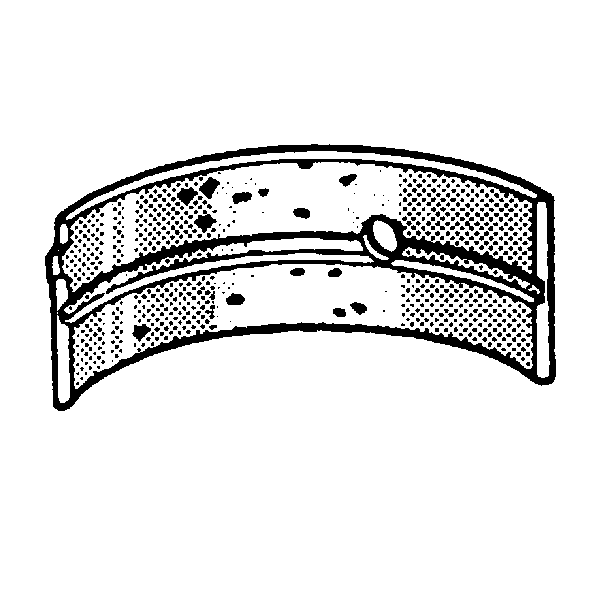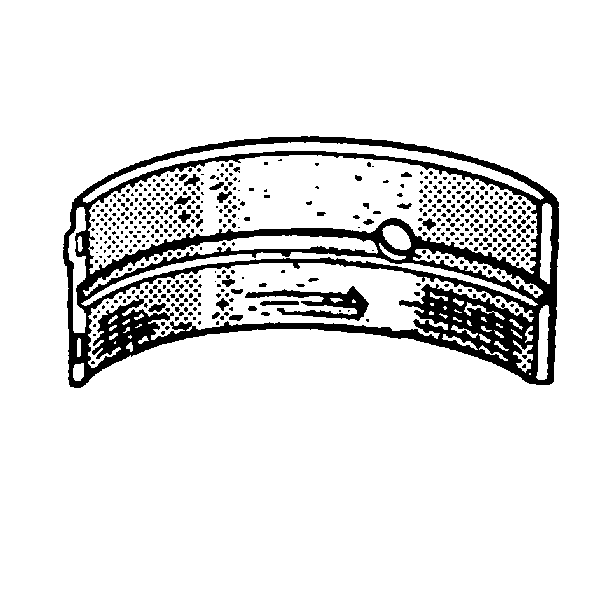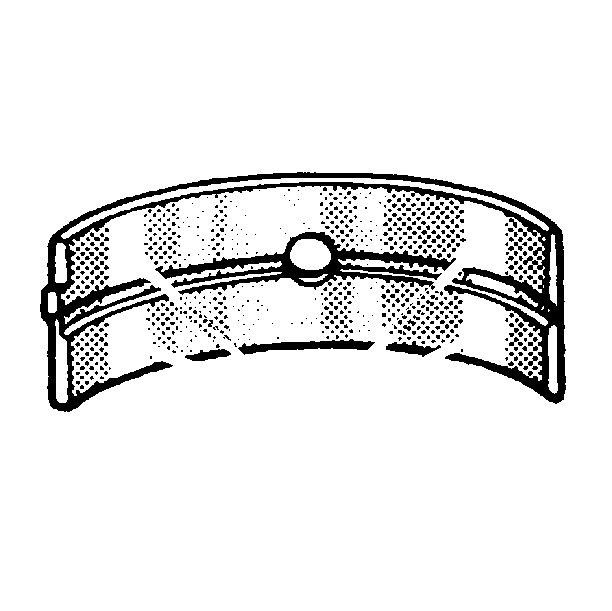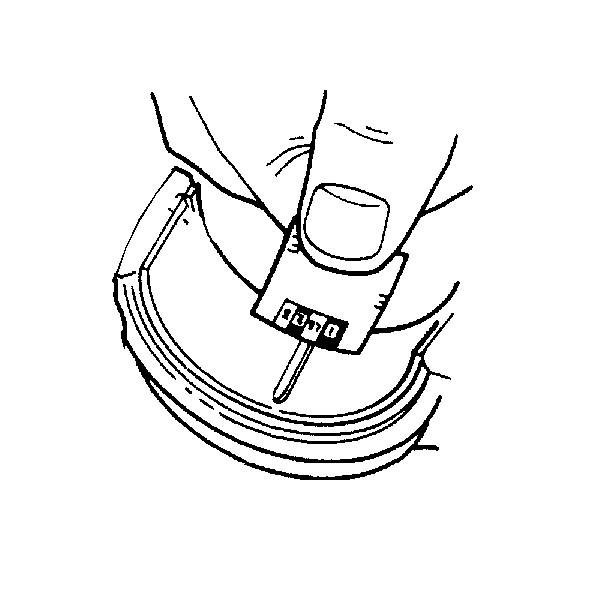For 1990-2009 cars only
- Inspect the main bearings for fatigue indicated by craters or pockets. Flattened sections on the bearing halves also indicate fatigue.
- Inspect the main bearings for excessive scoring or discoloration on both front and back of the bearing halves.
- Inspect the main bearings for dirt imbedded into the bedding material.
- Inspect the main bearings for improper seating indicated by bright, polished sections.
- If any of the above conditions exist, replace the crankshaft bearings.
- Wipe any oil from the crankshaft journals and the bearing inserts.
- Install the upper and the lower crankshaft bearings.
- Place a length of fresh, room temperature plastic gaging material all the way across all the main bearing journals.
- Reinstall the lower crankcase and the oil scraper.
- After reaching final torque, allow the assembly to sit for two minutes.
- Remove the main bearing bolts.
- Remove the lower crankcase.
- Determine the main bearing clearance by comparing the width of the flattened plastic gaging material at its widest point with the graduation on the gaging material container.
- If the bearing clearance is greater than 0.0635 mm (0.0025 in), replace the main bearings.
- If the new bearings do not reduce the clearance to 0.015-0.055 mm (0.0006-0.002 in) a new crankshaft will be required. Undersized bearings are not available and no crankshaft grinding is allowed.
- If reusing the crankshaft, clean the plastic gaging material from the bearing journals.




